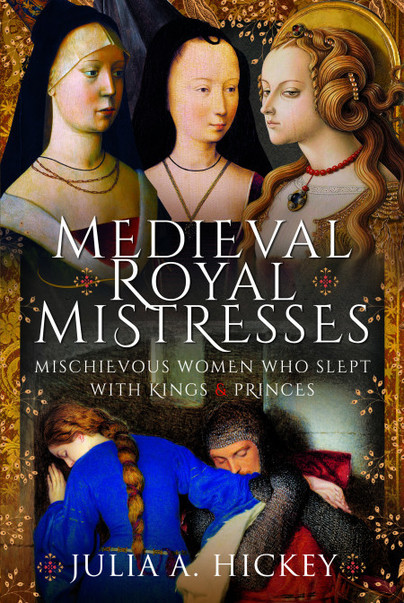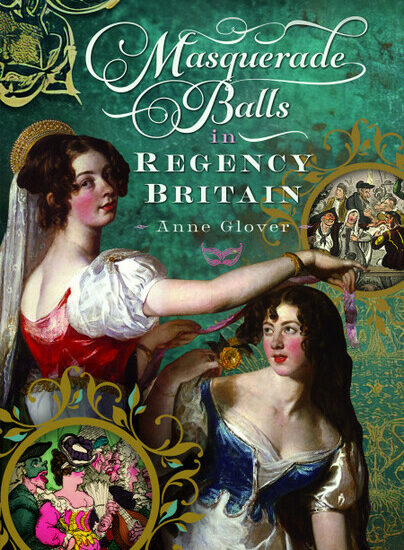Witch Week – Damned if they did and damned if they didn’t: mischievous women and witchcraft
Author guest post from Julia A Hickey.
The accusation of witchcraft became a weapon to wield against women, to bring them down and to ruin them. It was one short step from virtuous respectability to having a compact with the Devil. And not all of the so-called witches were snaggle-toothed crones. Some of the most powerful women in England were accused of witchcraft in the latter Middle Ages including; Joan of Navarre, Henry IV’s second wife; Eleanor Cobham, Duchess of Gloucester; and Jacquetta, Duchess of Bedford. They were each charged with using magic with the intention of influencing a king or even to harm him. Loss of reputation, property and freedom followed soon after.
Royal mistresses were neither virtuous nor respectable. They were the mischievous women who entertained kings in their beds. Alice Perrers, the mistress of King Edward III, became so unpopular that she was accused of witchcraft in 1376. Her origins are obscure. All that can be said with certainty is that she arrived at court at a time by when Edward III’s beloved wife, Philippa of Hainault, began to suffer from ill-health. The king began a secret affair with Alice and in time she bore him three children.
Alice was vilified by chroniclers for her low birth and her greed when she emerged from the privacy of Edward’s bed into the public arena. Philippa, who was Edward’s wife of some forty years, was a beloved consort and known for both her piety and domesticity. As the queen became more unwell, the king became more reliant upon Alice. He was seen to reward her with jewels, land and other financial benefits. Even worse, not only did she have the king’s ear but she controlled who else was able to access it. After Philippa’s death in 1369, Alice became queen in all but name. The king expected everyone to treat her with respect. He was both passionate and devoted to the woman he named the Lady of the Sun.

Thomas of Walsingham, the St Albans chronicler, writing about Alice called her a ‘wanton woman’ who overstepped the bounds of feminine propriety. He added that she was of low birth and ugly. He could not understand what appeal she held for the king who was besotted by his young mistress. He concluded that Alice must have trapped him by magic.
He was not alone. In 1376, the so-called Good Parliament prosecuted the king’s corrupt ministers. During the course of their deliberations, members of parliament heard testimony that Alice kept a Dominican doctor in her employment who fashioned a ring for her to keep the king in her thrall. It was the only way of explaining Edward’s infatuation. Alice was charged with abusing her position, convicted as one of Edward’s ‘evil advisers’ and banished from court.
She was permitted to return to court the following year by Edward’s son, John of Gaunt, when Parliament disbanded. Alice remained by her lover’s side until he died. A story arose that she stole the rings from the dead king’s fingers. But even Thomas of Walsingham, the monastic chronicler who loathed Alice, drew the line at making up a story about her stealing from the dead.
Alice was not the only royal mistress to be accused of witchcraft. Jane Shore, one of Edward IV’s many mistresses, was also from humble beginnings but unlike Alice she managed to avoid alienating the people around her. She was known for both her wit and her kindness to others.
Jane’s problems began on 9 April 1483 when her royal lover died unexpectedly. She quickly recognised that she needed a new protector. She became involved in a brief liaison with King Edward’s step-son, Thomas Grey 1st Marquess of Dorset. It was a poor choice. News arrived in London that Richard of Gloucester had taken charge of his young nephew, Edward V, and arrested the Queen’s brother, Anthony, 2nd Earl Rivers. Dorset disappeared into hiding the same day that his mother, Elizabeth Woodville, took her daughters and younger son into sanctuary at Westminster not trusting what Richard might do.
Jane moved into the bed of Edward’s former friend, William Lord Hastings. Barely a month after the death of the king, Mistress Shore lost her third lover. On 13 June 1483, at a council meeting held in the Tower of London, Richard, Duke of Gloucester, named by Edward IV as his son’s protector, accused Hastings of conspiring against him with the Woodville family. He was executed the same day and she was arrested soon after. The duke accused Jane of carrying messages between Hastings and Elizabeth Woodville.
Even worse than treason, Gloucester accused Jane of conspiring with Elizabeth to harm him by means of sorcery and witchcraft. Sir Thomas More wrote that Richard believed that their schemes were wasting away his body. He blamed shrivelling of the muscles in his left arm upon the sorcery of the two women. The accusation paved the way to resurrect old charges against Elizabeth and her mother Jacquetta of Luxembourg. He claimed that they used witchcraft to lure Edward IV into an injudicious marriage. The Queen was to be thoroughly discredited and her children declared illegitimate. Jane was made to walk through the streets of London, in just her shift, as a penalty for her harlotry -helpfully reminding the population that Edward’s love life was both complex and dissolute.
We tend to think of women accused of witchcraft as being on the margins of society. But some women were too powerful, knew too much or were just in the way. And the mischievous women? They were girls who were just too much of a handful.
Julia Hickey is the author of The Son that Elizabeth I Never Had: The Adventurous Life of Robert Dudley’s Illegitimate Son. Her upcoming book, Medieval Royal Mistresses, is available to preorder now.


